The crane has long been a symbol of good fortune and is a bird well-known in Japanese culture. Although most cranes are known to be migratory birds, the “tancho,” a species of crane native to Japan, does not migrate. Instead, it lives and breeds in eastern Hokkaido year-round. The tancho, also called the red-crowned crane or the Japanese crane, is one of the largest wild birds and has a graceful appearance. Tancho is the name of the crane species and also literally means red-crowned. “Tan” means reddish color and “cho” means the top. It is characterized by large white wings, a slender neck, and long legs. The red color of its head is represented by the tancho (丹頂). The tancho crane is the most familiar crane to Japanese people and is recognized as a symbol of Japan. It is also known worldwide as the symbol of Japan Airlines (JAL).

Symbol of longevity
There is a saying,
“Cranes live a thousand years, turtles live ten thousand years.”
鶴は千年、亀は万年
tsuru wa sennen kame wa mannen
crane [subject] thousand years turtle [subject] ten thousand years
Cranes do not actually live a thousand years. However, they are said to live up to 20 or 30 years in the wild. Since cranes live much longer than many other birds, they are considered a symbol of longevity. They are often seen at New Year’s, and at parties celebrating longevity, like special milestone birthday parties. We celebrate longevity at the age of 60, 70, 77, 80, 81, 88, 90, 99, 108, and 111, and each of these celebrations has a specific name! Cranes are also used in many traditional paintings and various kinds of arts and crafts.
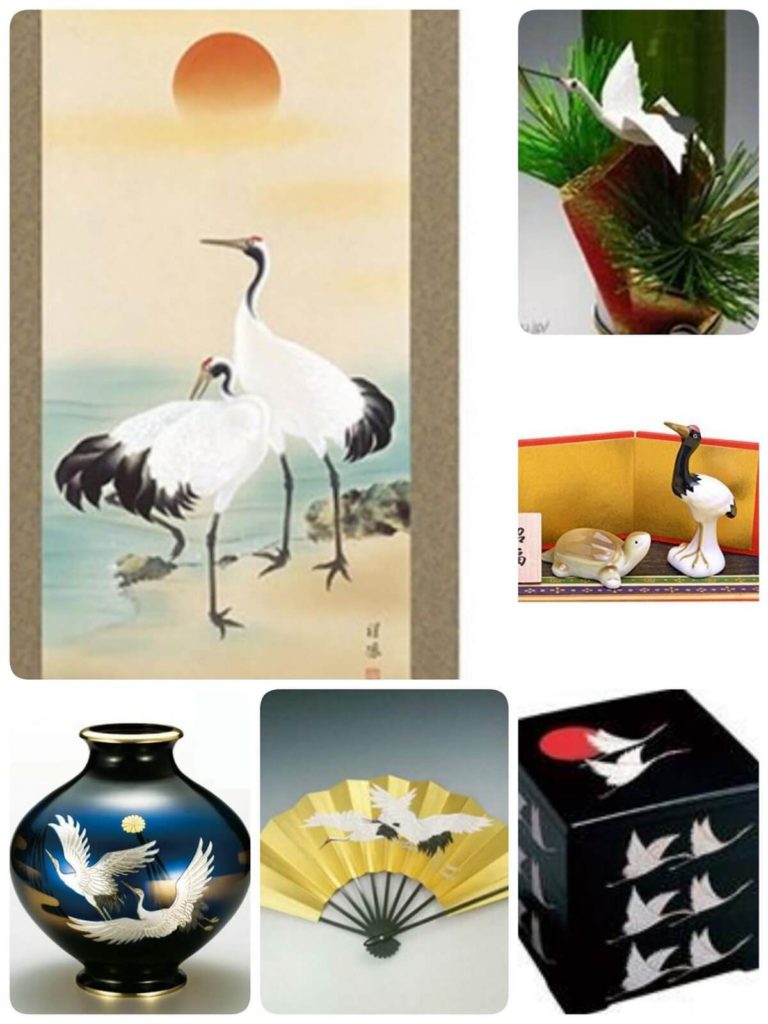
Connecting Heaven and Earth
There is a saying,
“A crane’s call.”
鶴の一声
tsuru no hitokoe
crane [possessive] call
A single cry from a crane is more dignified and superior to that of a flock of small birds. It is a metaphor for the fact that a matter that has been discussed by many people but could not be settled can be decided by a single word from a person of great power. This has a lot to do with the actual crane’s cry. Cranes seldom make a sound. However, when they do, their cries are loud, far-reaching, and magnificent. It is said that because of this, their cries would reach God in heaven.
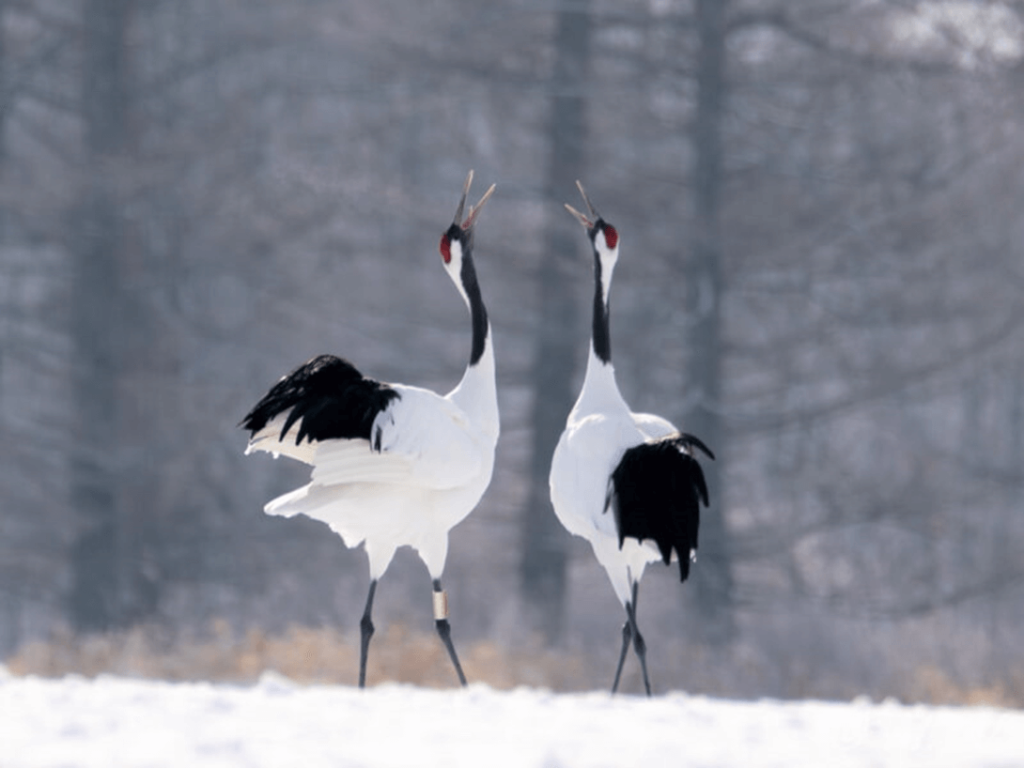
Mate for life
It is said that once cranes form a couple, they never break up and will live together throughout their lifetimes. They always support each other through thick and thin. So, a pair of cranes symbolizes the idea of mates for life. For that reason, cranes have become a standard motif at weddings. Many kimonos for weddings have beautiful crane patterns, and they are also used on many other ornaments at the ceremony.
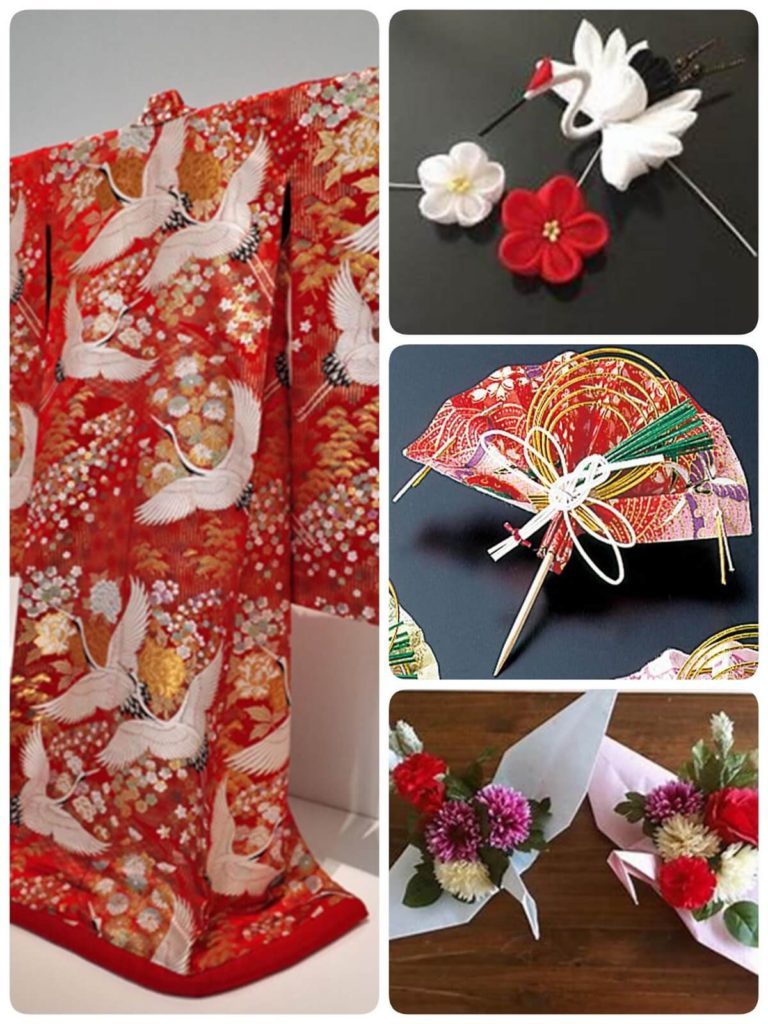
We are grateful to cranes because we believe that owning something with a crane motif will bring us good luck and a long healthy life.
A folding paper crane ( 折り鶴 orizuru)

Origami is the traditional Japanese art of folding paper without using scissors or glue. Most Japanese, especially girls, have a memory of making origami as kids. Origami skills are passed on from parents to children at home and also taught in kindergarten. So, most Japanese people know how to make things using origami paper. An origami crane (折り鶴 orizuru) is one of them, and we somehow never forget how to make it. Today, origami cranes have become well-known throughout the world and are in particular appreciated as a form of hospitality.
It is uncertain when and how origami culture began and spread. However, the custom of praying for longevity by making paper cranes has been practiced since the Muromachi period (1333-1573). Later during the Edo period (1603-1867), the practice of making paper cranes to pray not only for longevity but also for recovery from illness spread widely among the general public. It is also believed that if one completes making one thousand origami cranes, one special wish will come true.
One thousand origami cranes (千羽鶴 semba-zuru)

One thousand paper cranes, called sembazuru, are often offered to sick people in the hopes of healing their illness. They do not necessarily require exactly one thousand. The cranes are usually struck together on twenty-five strings with forty cranes each.

We can see this Japanese custom in Hiroshima, where there are a lot of origami cranes around the statue of Sadako in Hiroshima Peace Memorial Park. Sadako was exposed to the atomic bomb in Hiroshima in 1945 at the age of two. Ten years later, she developed leukemia and died aged 12. Sadako received origami cranes during her battle with illness and continued to make cranes herself from the desire to live. Since then, the crane has also become the symbol of Peace. In the Hiroshima Peace Museum, we can see the cranes made by Sadako. Today, thousands of cranes from all over the world are donated each year and placed around the Child of the Atomic Bomb statue.
The Grateful Crane (鶴のおんがえし tsuru no ongaeshi)
I hope that you now have an idea of how ingrained cranes are in Japanese culture? I’d like to introduce one more thing. It is a famous Japanese folktale, “The Grateful Crane” (つるのおんがえし tsuru no ongaeshi).
The story is about a crane that was released from a trap by a man and transformed into a beautiful woman to repay the favor. In this story, the crane woman visited the man and shut herself in a room for days, weaving beautiful cloth for the man to sell. In fact, the crane was plucking her own feathers with her beak and weaving them on the loom.

I happened to notice a coincidence. In Japanese, both” fold” (折る)and “weave” (織る)are pronounced, “oru.” Imagine the girl who kept folding paper cranes with the will to survive and the woman who kept weaving the cloth to return the favor. Both of them sacrificed themselves and continued to do (oru) it with all their hearts. Unfortunately, neither of them had a happy ending, but they left us with profound messages. At the end of the story, the crane woman turned back into a crane and flew high up into the sky.
Conclusion
Although sembazuru cranes are a symbol of people’s wishes, I have learned that sending them to disaster areas can sometimes be a nuisance because of the difficulty in finding a place to store them and how to dispose of them. I think this is a controversial issue due to differences in people’s values and cultures. Regardless of whether they are sent or not, sembazuru cranes are filled with people’s feelings and prayers, and I believe that they convey warm-heartedness that cannot be expressed in words. Why don’t you try making origami cranes? By folding a number of them, you will understand how much effort you make and feel as if your wish will come true.
How to make an origami crane. ↓
As you know, most species of crane are migratory, flying thousands of kilometers across the sky in search of a place to live. Undoubtedly, cranes know the importance of living and that the sky connects all the countries of the world. I do hope that the crane, a symbol of peace, will fly away with our wish for peace. May the sky we look up to be always blue.

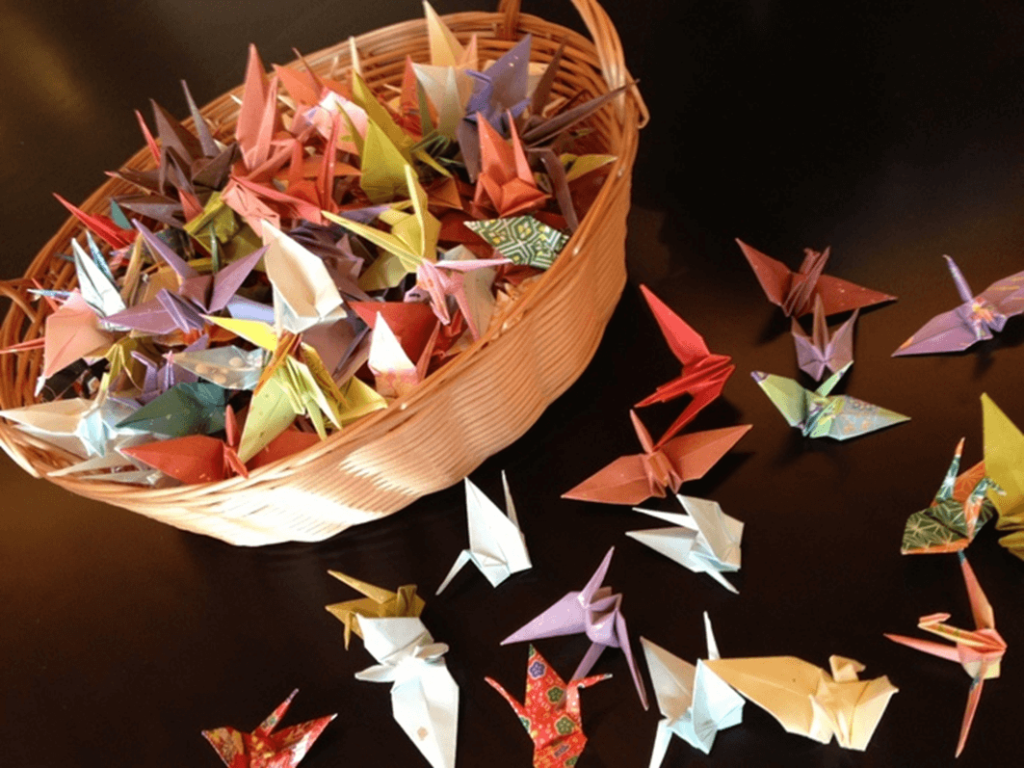
Lives in Takatsuki city, Osaka. Has been engaged in English for work and fun for years.

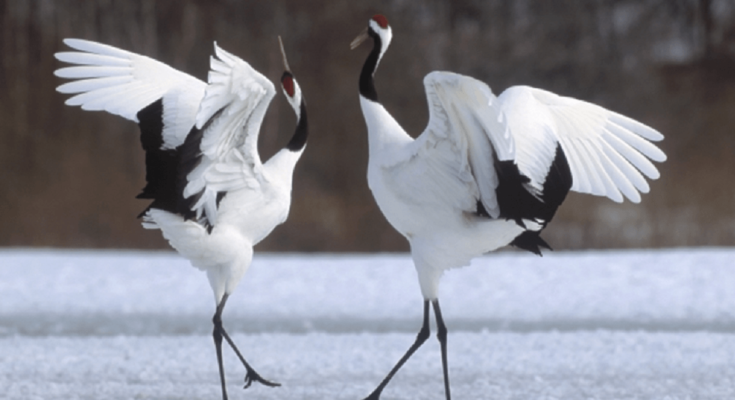

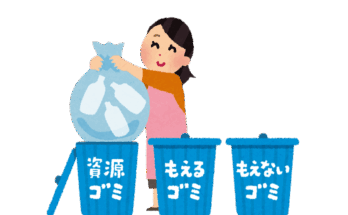

 HTJ has a YouTube page! Check it out
HTJ has a YouTube page! Check it out